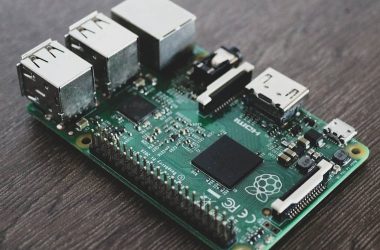How AI is Used in Cyber Attacks
Artificial Intelligence (AI) has revolutionized various industries, offering unprecedented opportunities for innovation and efficiency. However, AI’s capabilities are not limited to positive applications. Cybercriminals are increasingly leveraging AI to enhance the sophistication and effectiveness of their attacks. Let’s explore how AI is being used in cyber attacks and what you can do to protect yourself.
Understanding AI in Cyber Attacks
AI’s ability to analyze vast amounts of data, learn from patterns, and make autonomous decisions makes it a powerful tool for cybercriminals. By incorporating AI into their strategies, attackers can automate and optimize their operations, making it more challenging for traditional security measures to detect and mitigate threats.
AI-Powered Cyber Attacks
Here are some ways AI is being used in cyber attacks:
1. Automated Hacking
AI can automate the process of identifying and exploiting vulnerabilities in software and systems. Machine learning algorithms can analyze vast amounts of data to discover patterns and weaknesses, enabling attackers to launch targeted and efficient attacks.
2. Phishing Attacks
AI can enhance the effectiveness of phishing attacks by generating convincing and personalized messages. Natural Language Processing (NLP) algorithms can analyze a target’s writing style, interests, and online behavior to craft tailored phishing emails that are more likely to deceive victims.
3. Deepfake Technology
Deepfake technology, powered by AI, can create realistic audio and video impersonations of individuals. Cybercriminals can use deepfakes to impersonate executives, celebrities, or other high-profile targets, tricking victims into revealing sensitive information or transferring funds.
4. AI-Powered Malware
AI can be used to develop advanced malware that can adapt and evolve to evade detection. Machine learning algorithms can analyze the behavior of security software and modify the malware’s code to avoid being flagged as malicious.
5. Adversarial Attacks
Adversarial attacks involve manipulating AI systems by feeding them deceptive input data. Cybercriminals can use adversarial techniques to trick AI-powered security systems, such as facial recognition or intrusion detection systems, into making incorrect decisions.
The Impact of AI-Powered Cyber Attacks
The use of AI in cyber attacks can have severe consequences, including:
- Increased Attack Sophistication: AI-powered attacks are more sophisticated and difficult to detect, making it challenging for traditional security measures to keep up.
- Automated and Scalable Attacks: AI enables attackers to automate and scale their operations, allowing them to target multiple victims simultaneously.
- Erosion of Trust: AI-powered attacks, such as deepfakes, can erode trust in digital communications and undermine the integrity of online interactions.
- Financial and Reputational Damage: Successful AI-powered attacks can result in significant financial losses and damage to an organization’s reputation.
Protecting Against AI-Powered Cyber Attacks
Defending against AI-powered cyber attacks requires a proactive and multi-layered approach. Here are some steps you can take to protect yourself and your organization:
1. Implement AI-Powered Security Solutions
Leverage AI-powered security solutions to detect and mitigate AI-driven threats. Machine learning algorithms can analyze network traffic, user behavior, and system logs to identify anomalies and potential attacks.
2. Regularly Update and Patch Systems
Keep your software, systems, and devices up to date with the latest security patches. Regular updates can help protect against known vulnerabilities and reduce the risk of exploitation.
3. Educate and Train Employees
Provide regular cybersecurity training and awareness programs for employees. Educate them about the risks of AI-powered attacks, such as phishing and deepfakes, and teach them how to recognize and report suspicious activities.
4. Use Multi-Factor Authentication (MFA)
Implement MFA to add an extra layer of security to your accounts. MFA requires users to provide multiple forms of authentication, making it more difficult for attackers to gain unauthorized access.
5. Monitor and Analyze Network Traffic
Continuously monitor and analyze network traffic for signs of unusual or malicious activity. AI-powered network monitoring tools can help detect and respond to threats in real-time.
6. Develop an Incident Response Plan
Create a comprehensive incident response plan that outlines the steps to take in the event of a cyber attack. Regularly test and update the plan to ensure its effectiveness.
Conclusion
AI’s potential to revolutionize industries is undeniable, but it also presents new challenges and risks in the realm of cybersecurity. By understanding how AI is being used in cyber attacks and taking proactive steps to protect yourself, you can mitigate the risks and safeguard your digital assets. Stay informed, stay vigilant, and leverage AI-powered security solutions to defend against the evolving threat landscape.
Always try to use authentic software, files, and systems, and educate others about cyber threats. Stay up to date with the latest security practices because, No One Is Ever 100% Safe Online.





